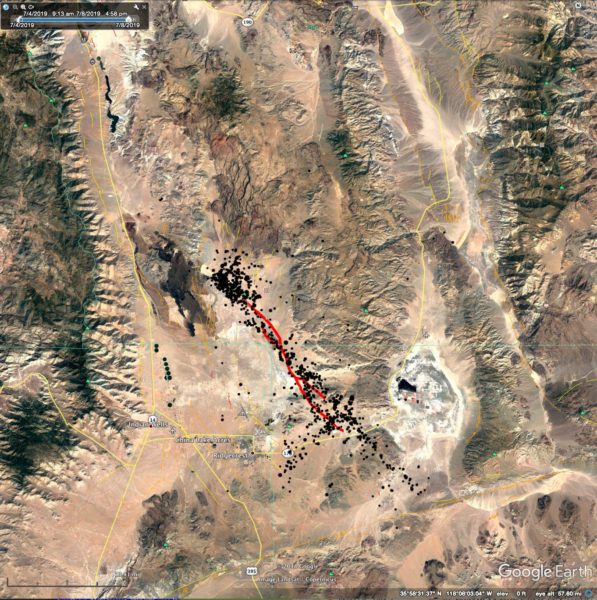Experts Worry Recent Earthquakes Could Trigger Activity on Dangerous Faults

The two earthquakes that rattled Southern California over the 4th of July holiday weekend – the 6.4 and 7.1 temblors near Ridgecrest, CA – have experts worried of what may follow on nearby faults.
“Those earthquakes [could] set off lots of other earthquakes [aftershocks],” said geophysics professor Greg Beroza. “There is a small chance that some of these aftershocks could be big. [The] official probabilities [will] change with time.”
The last time California experienced a quake of magnitude 7.0 or higher was in 1999.
The Ridgecrest temblors triggered thousands of aftershocks in the area, and experts fear that these aftershocks may continue for months or years to come.
The recent high-magnitude earthquakes come on the heels of news from the USGS that California’s earthquake drought has come to an end.
“We expect more earthquakes in the next 20 years than in the past 20 years — the past 20 years have been an ‘earthquake drought’ in California,” geophysics professor Simon Klemperer explained to the Stanford Daily.
The Ridgecrest quakes ruptured several faults in So.Cal, which have seismologists warning that these temblors could trigger other quakes.
“Quakes sometimes trigger other quakes farther away,” seismologist Lucy Jones tweeted over the weekend. “Generally, we can see an increase in quakes out to about 3-4 times the length of the mainshock’s fault. This fault is 25 miles, and the aftershocks are mostly within 25 miles of the mainshock’s fault.”
While the USGS has stated that they do not know of a relationship between the recent earthquakes to the San Andreas fault – the same fault line that could produce the devastating “Big One” in LA – it is possible that these large quakes and aftershocks may have added stress to the San Andreas fault line.
“The San Andreas hasn’t slipped in a long while. If the fault is loaded to the point where it is just about ready to slip, then it is possible that the recent earthquake could add just enough shear stress to the San Andreas to cause it to slip. Alternatively, the slip of these recent earthquakes could unclamp the San Andreas fault, making it easier to slip,” Michele Cooke, a geoscientist at the University of Massachusetts, told Live Science.
As California braces for the end of its “earthquake drought” it’s important to start preparing for the inevitable “Big One” now. Prepare your earthquake kits with enough food and water to last everyone in your household (pets included) for at least three days. You should likewise secure or mount any large furniture items like TVs and bookshelves, and have your property examined for seismic safety.
If you own an older home or building in California, chances are the property is lacking modern seismic reinforcements. Earthquake retrofitting will protect your property from damage and/or destruction during a large earthquake and ensure the safety of those who reside there.
Julian De La Torre is an expert in Los Angeles foundation inspection, foundation contractors, earthquake retrofitting, and foundation repair. Julian’s company, Julian Construction, has inspected over 15,000 structures, working with engineering firms and local departments of building & safety. The company has done more foundation repair and earthquake retrofitting in Los Angeles than any other company in the area over the last five years.





